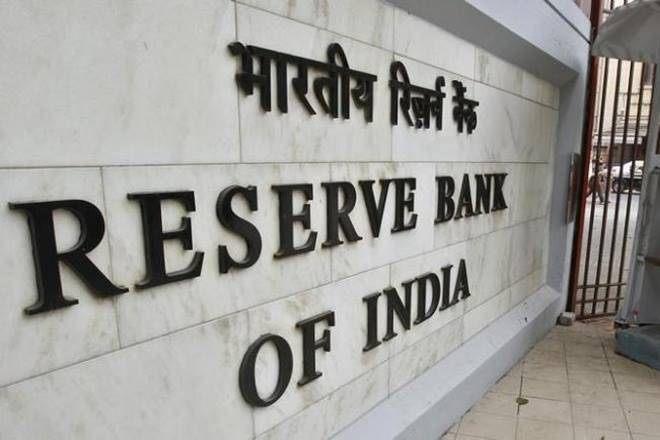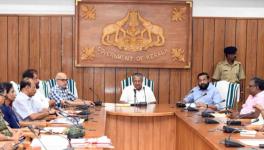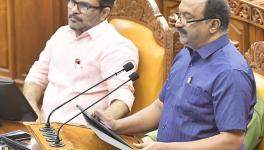RBI’s Bonanza: Fiscal Deficit by Another Name

Image for representational use only.Image Courtesy : The Financial Express
We all know by now, that economic activity in this country has come to a grinding halt. That’s not just bad for our earnings, but also for the Government of India (GoI). Because, when people don’t buy or sell things, or even produce them, the government doesn’t get enough taxes. So, economists have been predicting that there’ll be a big shortfall in Modi sarkar’s tax revenues this year.
The problem is that finance minister Nirmala Sitharaman has committed herself to spending more. So, either she cuts back, or she has to raise more cash. The Narendra Modi 2.0 government has been looking at one option of getting more revenue for quite a few years now. This is by getting the Reserve Bank of India (RBI) to transfer a part of its reserves.
Former Chief Economic Adviser to the Modi government, Arvind Subramanian, had made a case for it three years ago. He argued that India’s central bank maintains unreasonably high reserves relative to its balance sheet, second only to Norway. He believed that the RBI could easily handover Rs 2-3 lakh crore to the government, without destabilising its capital.
The RBI then didn’t like this. Urjit Patel, believed to be one of the more pliable RBI governors, didn’t play ball, and his deputy, Viral Acharya, gave a speech – that went viral – pushing for central bank autonomy. Patel didn’t last long and neither did his deputy, Acharya. The stage was set for some of the reserves to be given to the GoI.
Read Also: The Modi Government’s Spat with the RBI
Patel’s successor, finance ministry bada babu, Shaktikanta Das, was expected to oblige almost immediately. But, that could have invited bad press. So, another former civil servant-turned-RBI governor, Bimal Jalan, was tasked with the job of deciding how much reserve the central bank should maintain.
Before, we tell you what Mr Jalan recommended, let’s just quickly look at what the RBI’s balance sheet is really made up of. More than 70% of RBI’s ‘assets’ are made up of its foreign currency reserves. Another 17% or so, consists of loans it has given to the government (remember loans are assets on a bank’s balance-sheet) and other rupee assets make up about 5%-6%. And, 4% of the bank’s assets are made up of gold reserves.
The RBI earns interest on the bonds it holds and the loans it gives. Along with that, commercial banks borrow money from it for short-periods and pay interest on that. In some years, like when demonetisation took place (in November 2016), banks end up parking their excess cash with the RBI, and the central bank ends up paying more interest than it earns. And don’t forget the interest-free loan that you and I have given the RBI in the form of the currency it has issued to us. The currency notes in themselves are nothing but money that the RBI holds on our behalf but pays no interest on.
Accounting rules require the RBI to ‘revalue’ its foreign currency and gold reserves. How is that done? The assets are first valued at their current price and compared with the price at which they were bought. The difference between the two, if it’s a gain, is put on the balance sheet in its Currency and Gold Revaluation Account (CGRA). Please note, that these are not any real gains. These are simply accounting entries of ‘potential’ gains (or losses) in case the RBI sells gold or foreign currency.
Another key component of the RBI’s reserves – and some say the only real reserve of the RBI – is its contingency fund. This is maintained from the RBI’s ‘retained’ earnings. It is a crucial resource for the central bank to dip into, when faced with currency fluctuations or any monetary crises.
In 1997, the Subrahmanyan Committee recommended that the RBI’s contingency fund should be maintained at 12% of its balance sheet. At that time, the contingency fund had dropped to just 5%, which was barely enough to deal with a crisis. Over a period of time, it gradually rose, to stand at about 7% of the RBI’s balance sheet in June 2018.
Bimal Jalan, who submitted his report this July, decided that the contingency fund doesn’t need to be more than 5.5%-6.5% of the RBI’s balance sheet. Governor Das has, in turn, decided that there’s no harm in being on the lower end of the range. So, this gave him more than Rs 50,000 crore to gift to the government.
But, what impact will this have on the RBI’s ‘reserve’ money (in crude, but inaccurate terms, the amount of cash in the system)? When the RBI accounts for its net profit, it causes a reduction in reserve money by the exact same amount. The reserve money is ‘returned’ to status quo, when RBI gives dividend to the government or transfers ‘retained profits’ it to its balance sheet. This time, however, it has reduced its contingency fund, thus adding to the reserve money by exactly Rs 52,637 crore.
Read Also: Why the Debate on RBI Reserves is Entrapped in Neo-Liberal Homily
In macro terms, this is no different from printing money. The government might well have funded its spending by asking RBI to print additional money. In real terms, both these methods are exactly the same. In fact, there is another reason to believe that this one-time transfer of RBI’s reserves is similar to increasing the fiscal deficit. As economist Prabhat Patnaik has argued, the RBI transferring its reserves to its owner, is just an ‘internal’ transfer within the government sector. So, financing government spending using the RBI’s reserves doesn’t make an iota of a difference to the overall deficit in the government sector.
But, why do mainstream economists turn a blind eye to these basics of ‘Accounting 101’? It is because such disguised ways of financing spending do not appear in the formal Budget. It gives an appearance that the government is committed to being fiscally responsible. It is simply a self-deluding parlour trick to please fiscal fundamentalists.
Aunindyo Chakravarty was Senior Managing Editor of NDTV India & NDTV Profit. He currently anchors Simple Samachar on NDTV India. The views are personal.
Get the latest reports & analysis with people's perspective on Protests, movements & deep analytical videos, discussions of the current affairs in your Telegram app. Subscribe to NewsClick's Telegram channel & get Real-Time updates on stories, as they get published on our website.























